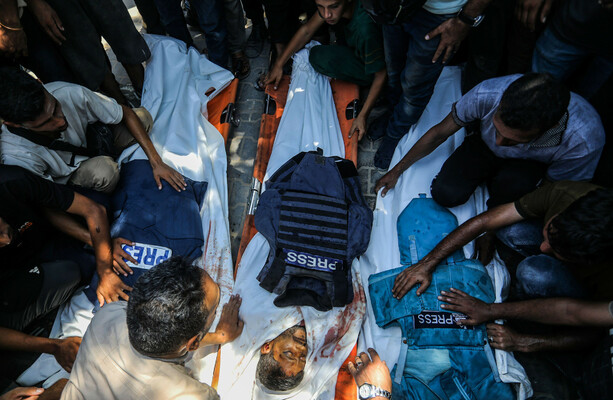Copyright thejournal

We need your help now Support from readers like you keeps The Journal open. You are visiting us because we have something you value. Independent, unbiased news that tells the truth. Advertising revenue goes some way to support our mission, but this year it has not been enough. If you've seen value in our reporting, please contribute what you can, so we can continue to produce accurate and meaningful journalism. For everyone who needs it. One-off amount I already contribute Sign in. It’s quick, free and it’s up to you. An account is an optional way to support the work we do. Find out more. Investigates Investigates Money Diaries The Journal TV Climate Crisis Cost of Living Road Safety Newsletters Temperature Check Inside the Newsroom The Journal Investigates Daft.ie Property Allianz Home The 42 Sport TG4 Entertainment The Explainer A deep dive into one big news story Sport meets news, current affairs, society & pop culture have your say Or create a free account to join the discussion Advertisement More Stories Journalist Access When will international media be allowed into Gaza? Over 200 journalists have been killed in Gaza since 7 October. 1.59pm, 28 Oct 2025 Share options Palestinians mourners attend the funeral of Reuters photojournalist Hossam al-Masry, Al Jazeera cameraman Mohamed Salama, journalist Mariam Abu Daqqa, and NBC News journalist Moaz Abu Taha, all of whom were killed in an Israeli airstrike on a hospital in Khan Younis, Gaza, on Monday, 25 August, 2025.Alamy Stock Photo Alamy Stock Photo A FRAGILE CEASEFIRE has been in place in Gaza since 10 October. In that time, 94 people in Gaza have been killed by Israeli forces and over 344 have been wounded. Although there has been a resumption of aid into the territory and many displaced Palestinians have made their way back into the territory, there remains uncertainty as to when international media will be allowed into the Gaza Strip to report on the conditions of those living there. Since October 2023, Israeli authorities have prevented foreign journalists from entering the devastated territory, taking only a handful of reporters inside on tightly controlled visits alongside its troops. Last week, Israel’s Supreme Court heard a petition filed by an organisation representing international media outlets in Israel and Palestine, demanding independent access for journalists to Gaza. The court granted Israel’s government 30 days to respond to the petition. Sara Qudah, Regional Director for the Middle East of the Committee to Protect Journalists (CPJ), says it is still unknown when international media will be allowed to report from the area. Media outlets are mostly reliant on reporting from Palestinian journalists based in Gaza who work for major wire agencies. This reporting is backed up by figures from Gaza’s health ministry, photography from inside Gaza, and aerial footage of the strip. Witness testimonies from medical professionals operating within the area and humanitarian workers have further testified to what has unfolded within Gaza. Journalists from international media have reported from the Israeli border, where much of the bombardment of Gaza can be seen and heard. This has led Israel to accuse global media of being partisan – but the state has yet to announce when various media outlets will be allowed to rely on its own independent reporting. Palestinians are seen at a street with destroyed buildings, in Jabalia refugee camp northern Gaza Strip, 27 October 2025.Alamy Stock Photo Alamy Stock Photo Qudah told The Journal: “While we don’t know when journalists will be able to enter the Gaza Strip under fully independent conditions, the Committee to Protect Journalists has made its position and concerns very clear.” The CPJ has described the ban on media access to Gaza since 7 October 2023 as a “blanket prohibition”. On 5 October, the CPJ filed an amicus brief in support of the Foreign Press Association in Israel’s petition to the Supreme Court. It has argued that the ban violates Israel’s obligations under the International Covenant on Civil and Political Rights, particularly Article 19, which deals with freedom of expression. Qudah said that despite media reports indicating that Israeli officials held a high-level discussion on 15 October about possible ending restrictions there has been no formal announcement of such or a clear timeline. “CPJ emphasises that any access must be immediate, independent and unrestricted, not simply tours escorted by military or highly‑controlled coverage. Limited, guided access fails to meet the standard of independent journalism,” she said. Since 7 October 2023, it is estimated that between 224 and 278 journalists have been killed in Gaza. The vast majority were Palestinian. Advertisement Surviving journalists that continue to report from the strip have previously spoken out about their hunger and illness from lack of food and clean water. Colleagues carry the body of Palestinian journalist Hassan Essliah for burial after he was killed in an overnight Israeli army strike on Nasser Hospital in Khan Younis, Gaza Strip, Tuesday, 13 May 2025.Alamy Stock Photo Alamy Stock Photo Qudah said that the unprecedented number of journalists killed in this war “marks a deeply troubling milestone in the history of press freedom”. She said one of the most “alarming” implications is the “apparent normalisation” of targeting journalists – “a practice that not only violates international humanitarian law but also sets a deeply dangerous precedent globally”. “When journalists are deliberately targeted and killed with no consequences, it sends a chilling message: that those documenting war, injustice, or humanitarian crises are no longer protected, even nominally, by international norms.” Coverage of the dire situation in Gaza is not just important for accountability, Qudah explained, but is essential for informed global discourse. Access for foreign media in Gaza is limited to “embedding with the Israeli military”, meaning reports from such at present face censorship. The killing of local journalists has led to significant blind spots in global coverage and understanding. Qudah said even more “troubling” is “the use of broad and often unverified claims that legal Palestinian journalists are combatants or terrorists” that seek to undermine their legitimacy. “This not only distorts public discourse but also weaponise disinformation to obscure the truth.” Qudah thinks the consequences of this could be profound, potentially resulting in media organisations growing more relaxants to send their correspondents into high-risk zones. Local journalists may be forced into silence or exile, and conflict zones could become “informational black holes”, she said. At CPJ, Qudah and her colleagues have documented a rise in drone use against journalists across the Middle East and Africa after Israel’s use of drones to target journalists in Gaza. “This is a deadly implication that we’re witnessing now, one that could not only be catastrophic on journalists in conflict zones, but on journalists everywhere,” she said. Placards in memory of journalists killed in Gaza are visible during a public commemoration organized by the Order of Journalists of Lazio and Articolo 21, at Piazza Santi Apostoli.Alamy Stock Photo Alamy Stock Photo The risk faced by journalists entering an active war zone or area of conflict is borne by the journalists, their editors, and their organisations, Qudah said. The safety of journalists is one of two reasons supplied by Israel as a barrier to allowing media access to Gaza, the first being the integrity of its national security and military operations. “Foreign journalists have independently reported from many recent, high-casualty wars, including Iraq, Afghanistan and Ukraine,” she said. The CPJ remains concerned about the safety and working conditions for Palestinian journalists despite the ceasefire. Just days after the ceasefire, journalist Saleh Aljafarawi was shot and killed in Gaza city, reportedly by members of an armed Palestinian group, Qudah said, adding that his death highlights the ongoing risks for journalists even when active hostilities have paused. Based on CPJ’s data, Israel has killed 237 journalists and media workers, of which: 197 were Palestinians killed in Gaza 31 Yemenis in Yemen 6 Lebanese in Lebanon 3 Iranians in Iran. “The year 2024 is the deadliest year for journalists in CPJ history; almost 70% killed by Israel. Until this moment, no investigation or justice has yet been launched to hold those responsible for the killing of more than 200 journalists and media workers by Israeli forces. “This ongoing impunity only adds to the climate of danger and fear in which journalists are operating.” Readers like you are keeping these stories free for everyone... A mix of advertising and supporting contributions helps keep paywalls away from valuable information like this article. Over 5,000 readers like you have already stepped up and support us with a monthly payment or a once-off donation. Support The Journal Emma Hickey View 19 comments Send Tip or Correction Embed this post To embed this post, copy the code below on your site Email “When will international media be allowed into Gaza?”. Recipient's Email Feedback on “When will international media be allowed into Gaza?”. Your Feedback Your Email (optional) Report a Comment Please select the reason for reporting this comment. Please give full details of the problem with the comment... This is YOUR comments community. Stay civil, stay constructive, stay on topic. Please familiarise yourself with our comments policy before taking part. Leave a Comment Submit a report Please help us understand how this comment violates our community guidelines. Damaging the good reputation of someone, slander, or libel. Racism or Hate speech An attack on an individual or group based on religion, race, gender, or beliefs. Trolling or Off-topic An attempt to derail the discussion. Inappropriate language Profanity, obscenity, vulgarity, or slurs. Advertising, phishing, scamming, bots, or repetitive posts. Please provide additional information Thank you for the feedback Your feedback has been sent to our team for review. Leave a commentcancel Newly created accounts can only comment using The Journal app. This is to add an extra layer of security to account creation. Download and sign into the app to continue. Access to the comments facility has been disabled for this user View our policy ⚠️ Duplicate comment Post Comment have your say Or create a free account to join the discussion Committee to Protect Journalists Journalist Access Journalists Media access News in 60 seconds Extreme Weather Why is Hurricane Melissa so strong and how will it impact Ireland? Netanyahu orders 'powerful' strikes in Gaza despite ceasefire agreement Weather Warning Four southern counties to come under wind and rain warnings on Thursday 13 mins ago ai technology Irish jobs set to go as Amazon cuts 14,000 roles globally following AI investments 24 mins ago financial review RTÉ defends payment issues in new report as being ‘years or decades old’ 43 mins ago New train station gets planning permission near primary school in Moyross Delighted Carrick-on-Shannon locals welcome home Tidy Towns award A man has been arrested after he barricaded himself inside an empty creche in County Meath Oliver Plunkett Street Gardaí launch investigation into attacks on drag artists in Cork city by-election time Runners and riders: Connolly's on her way to the Áras - so who might fill her Dáil seat? Extreme Weather Why is Hurricane Melissa so strong and how will it impact Ireland? more from us Investigates Money Diaries The Journal TV Journal Media Advertise With Us About FactCheck Our Network FactCheck Knowledge Bank Terms & Legal Notices Terms of Use Cookies & Privacy Advertising Competition more from us TV Listings GAA Fixtures The Video Review Journal Media Advertise With Us Our Network The Journal FactCheck Knowledge Bank Terms & Legal Notices Terms of Use Cookies & Privacy Advertising Competition © 2025 Journal Media Ltd Terms of Use Cookies & Privacy Advertising Competition Switch to Desktop Switch to Mobile The Journal supports the work of the Press Council of Ireland and the Office of the Press Ombudsman, and our staff operate within the Code of Practice. You can obtain a copy of the Code, or contact the Council, at https://www.presscouncil.ie, PH: (01) 6489130, Lo-Call 1800 208 080 or email: mailto:info@presscouncil.ie Report an error, omission or problem: Your Email (optional) Create Email Alert Create an email alert based on the current article Email Address One email every morning As soon as new articles come online



